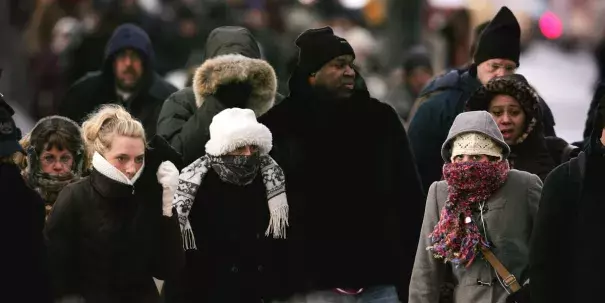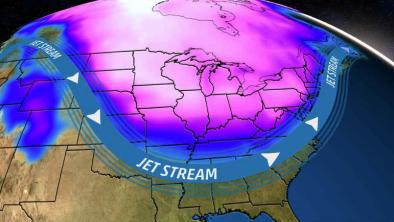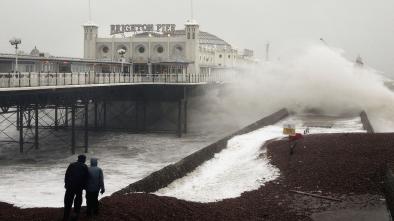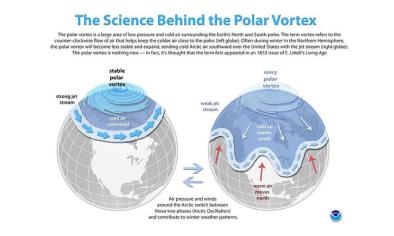The Return of the Polar Vortex, Explained

The reason these changes keep happening is that the term “polar vortex” actually describes two types of cold weather events. One happens in the troposphere, the lowest layer of the earth’s atmosphere, while another happens higher up in the stratosphere. Basically it's a frigid cyclone.
Let's start with what they have in common. Both kinds of polar vortex are large-scale weather patterns dominated by "westerlies"—winds moving from west to east, encircling the polar region. The polar vortices found in the troposphere are generally much larger than the ones in the stratosphere and are usually the ones that effect weather down on the ground, chilling our bones here on the planet's surface.
Those winds swirling from west to east form a low-pressure system. That much is perfectly normal. These big swirling air masses normally hover over the North and South poles in the wintertime. In the northern hemisphere, polar vortices center around northeastern Siberia and Baffin Island in Canada, where winds spin counterclockwise around a low-pressure center at speeds of up to 100 miles per hour. A strong low-pressure system at the polar vortex keeps jet streams flowing across the planet.
When the low-pressure system starts to weaken, though, that’s when people should start bundling up. Without a strong low-pressure system in place to maintain typical weather patterns, the jet stream starts to move around the earth. The wind begins to shift. Instead of a west-to-east trajectory, the jet stream starts to follow more of a north-to-south path. If that jet stream should encounter a high-pressure system, full of dry light winds, that can act as a choke point for the vortex. The system can break off and float southbound, right down to the United States.
...
The same thing is coming around again. About New Year’s Day 2019, a stratospheric polar vortex began to fracture in the Arctic. Scientists suspect that recent weather events, including the snowstorm that hit Washington, D.C., are just the beginning of the polar vortex’s freezing reign.
But if polar vortices are normal, then why have they only recently become a big deal in the weather forecast? You can thank climate change.
Climate scientists have found "robust relationships" between Arctic warming and jet-stream wavering. In 2015, they predicted that “the frequency of extreme weather events caused by persistent jet-stream patterns will increase.”
So even when the weather is cold, climate change probably plays a leading role—and this chilly problem isn't going away.
Related Content





